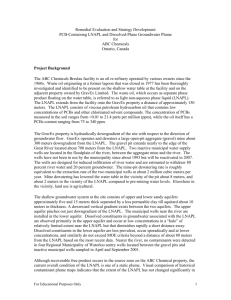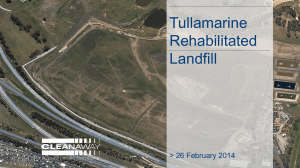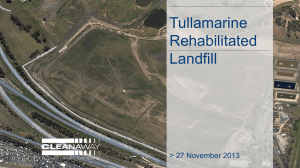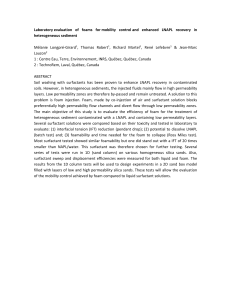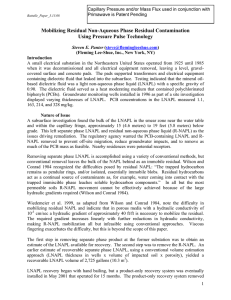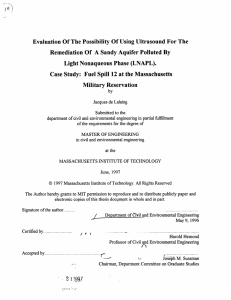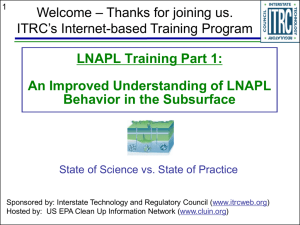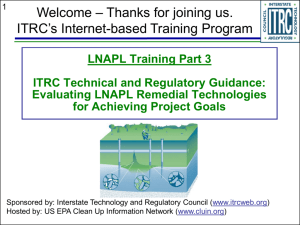evaluating the practicality of lnapl recovery
advertisement
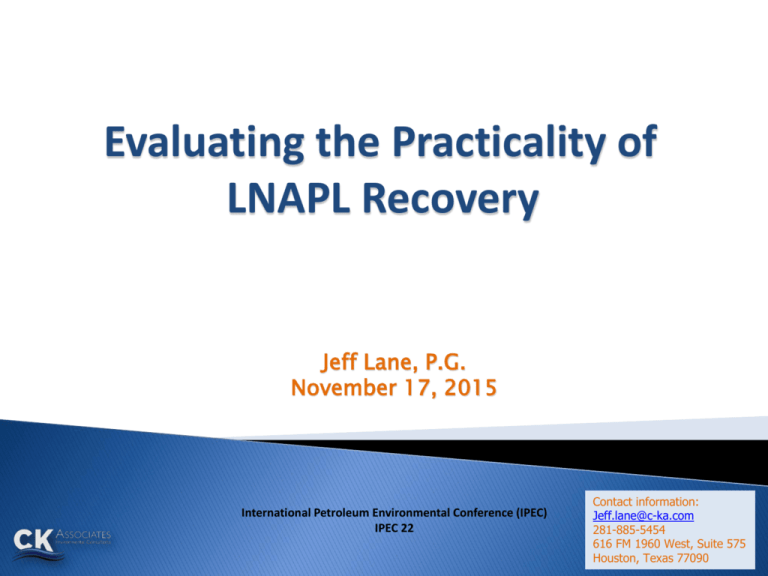
Evaluating the Practicality of LNAPL Recovery Jeff Lane, P.G. November 17, 2015 International Petroleum Environmental Conference (IPEC) IPEC 22 Contact information: Jeff.lane@c-ka.com 281-885-5454 616 FM 1960 West, Suite 575 Houston, Texas 77090 Explosive vapors Expanding LNAPL or dissolved phase plume Threat to an underground utility or structure Surface water impact LNAPL – light nonaqueous phase liquid (i.e. oil, gasoline) 40 CFR 280.64 – owners and operators of USTs must remove free product to the “maximum extent practicable”…as determined by the implementing agency Texas/Louisiana Risk-Based Approach New Mexico ≤ 1/8 inch No “floating oil” Oklahoma Risk-Based No “measurable product” Colorado To the extent practical ITRC Guidance provides a tool for screening remedial technologies ◦ Site setting ◦ Geological information ◦ LNAPL properties ◦ LNAPL distribution ◦ LNAPL recoverability information ◦ LNAPL mobility and stability ◦ Identified remedial objective Excavation Liquid recovery (single & dual phase) Vapor recovery Air sparging Insitu treatment (i.e. soil mixing, chemical oxidation, soil flushing) Natural Source Zone Depletion (i.e. MNA) Highly volatile LNAPL High hydraulic conductivity Thick vadose zone SVE and/or Soil venting Crude oil in shallow subsurface Surface water seepage Low hydraulic conductivity Hydraulic recovery and/or Excavation Deep contamination Limits: Excavation, Insitu treatment Equipment obstructions Limits: Recovery systems, Insitu treatment Limited radius of influence Limits: Vapor and Hydraulic recovery systems Low residual saturation Limits: Vapor and Hydraulic recovery systems Lack of vadose zone Limits: Vapor recovery Prevention of plume spreading Protection of receptors Reduce plume longevity Recovery to extent practical Stable plume footprint Verifying the absence of receptors Recover trends Transmissivity ITRC 2009 Training Already recovered to the extent practical When only residual saturation exists No receptors at risk (vapors/water wells/surface water) Stable plume No ongoing sources When institutional controls are possible source Monitoring wells Surface Water Vapors Residual or Free-Phase LNAPL Dissolved-Phase Water Supply well Monitoring wells Surface Water Vapors Residual or Free-Phase LNAPL Dissolved-Phase Water Supply well Applicability of potential remedial technologies depends on site-specific hydrogeologic characteristics, nature and distribution of contaminants, and remedial objectives. Technologies for removal of mobile LNAPL exist and may be applicable at some sites. Subsurface restoration to precontamination conditions may require removal of virtually all LNAPL and much of the contamination sorbed to aquifer material. Technological limitations to complete LNAPL removal may exist at many sites. (EPA Ground Water Issue – EPA/540/S-95/500, 1995) No LNAPL source = No LNAPL spread Most remedial technologies leave residual product in place (except excavation) (ITRC 2009) Dissolved hydrocarbon plume growth is typically restricted by natural attenuation Deed restriction can prohibit water well use (i.e. institutional control) 250 feet Dilution, Sorption, Volatilization, Microbial degradation Site-specific conditions influence options Regulations provide structure and options Receptors can be protected by LNAPL removal or LNAPL control Implementation of institutional controls is frequently necessary It may or may not be necessary to remove LNAPL to protect receptors. Contact information: Jeff.lane@c-ka.com 281-885-5454 616 FM 1960 West, Suite 575 Houston, Texas 77090
